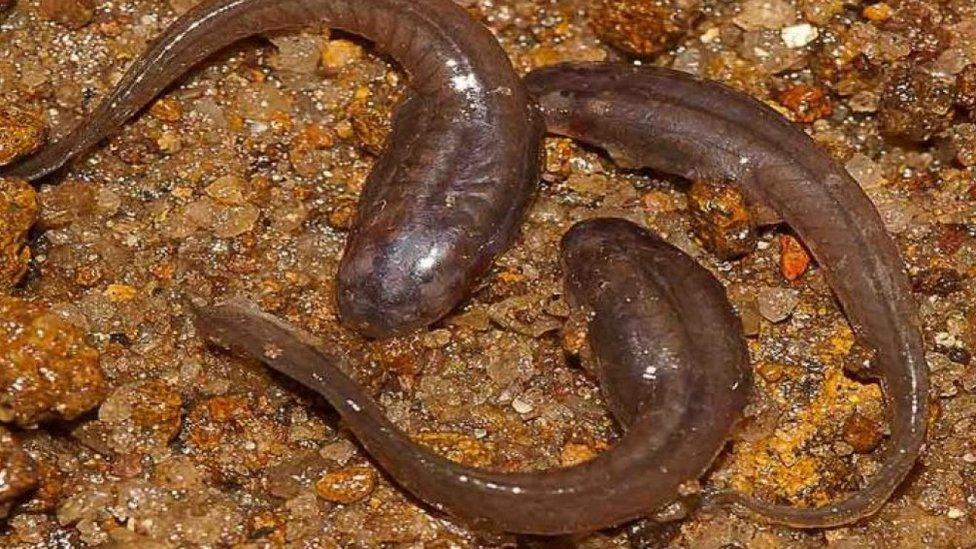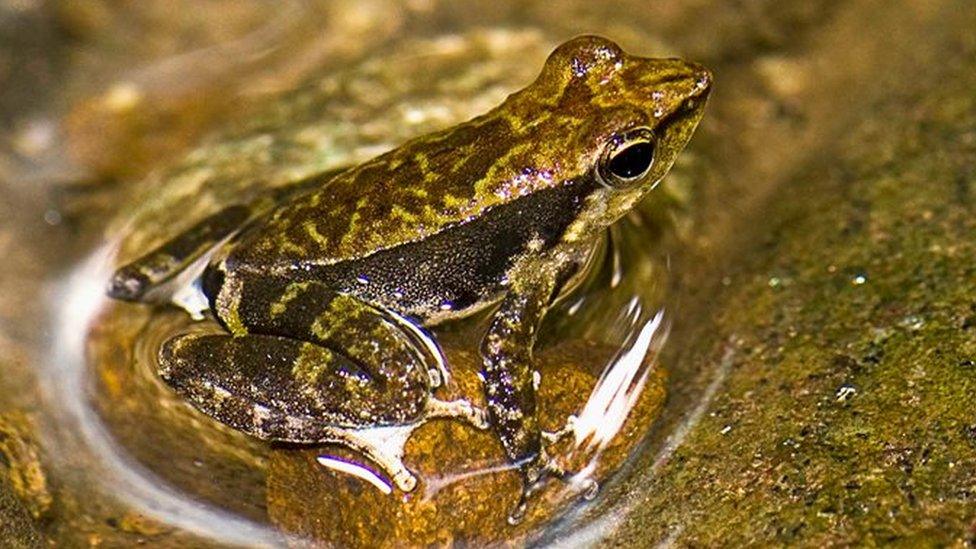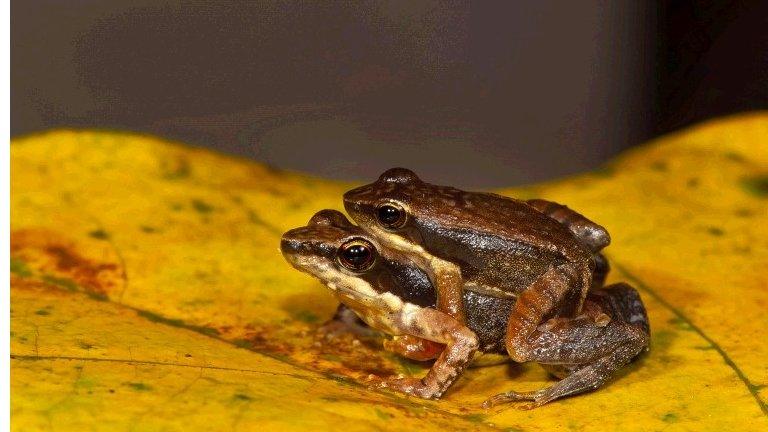'Dancing' tadpoles discovered in India's Western Ghats
- Published

The new tadpole belongs to the Indian Dancing frog family Micrixalidae
A new tadpole that burrows through sand has been discovered in the Western Ghats of India, scientists report.
The researchers' study, published in the journal Plos One, external, says that tadpoles would not normally burrow through sand, nor swallow the material, but this "remarkable tadpole" does.
It belongs to the Indian Dancing frog family, Micrixalidae.
The study added that the new findings underlined the "uniqueness of amphibians" of the Western Ghats.
A group of scientists from University of Delhi, University of Peradeniya and Gettysburg College discovered and documented the larvae, and genetically confirmed their identity as Micrixalus herrei.
"These tadpoles probably remained unnoticed all these years because of their fossorial nature, which in itself is a rare occurrence in the amphibian world," said Prof SD Biju from University of Delhi.
The scientists said these tadpoles were discovered from "deep recesses of streambeds" where they "live in total darkness until they fully develop into froglets".
The Indian Dancing frogs are known for waving their legs in sexual and territorial display, but tadpoles from this family had remained a mystery for scientists.

The new tadpole belongs to the Indian Dancing frog family Micrixalidae.
Prof Madhava Meegaskumbura from University of Peradeniya said Micrixalidae tadpoles "have ribs and this provides them greater muscle attachment" to help them "wriggle through sand".
"Only four families of frogs are reported to have ribs, but we show that at least some of Micrixalidae also have ribs, even as tadpoles," he said.
The study added that these tadpoles "lack teeth" but have "well-serrated jaw sheaths", which helps them avoid large sand grains while feeding.
It also added that very little was known about the habitat requirements of these tadpoles.
"Observations made so far show that the tadpoles inhabit sandy banks under canopy-covered streams," it said.
The Western Ghats is a mountainous region in southern India which is known as a hotspot of biodiversity.

'Secretive' tadpoles
Inhabit interstitial spaces within sand and gravel beds of forest streams
Gut contents consist of sand and sediments ingested with organic material
Have an eel-like body; extensive tail musculature aids underground movement
Ribs provide protection for internal organs and facilitate underground movement
Serrated jaw sheaths prevent large sand particles from entering the mouth
Skin-covered eyes provide protection from abrasive sand particles
Source: Journal Plos One, external

- Published22 January 2016
- Published8 May 2014
